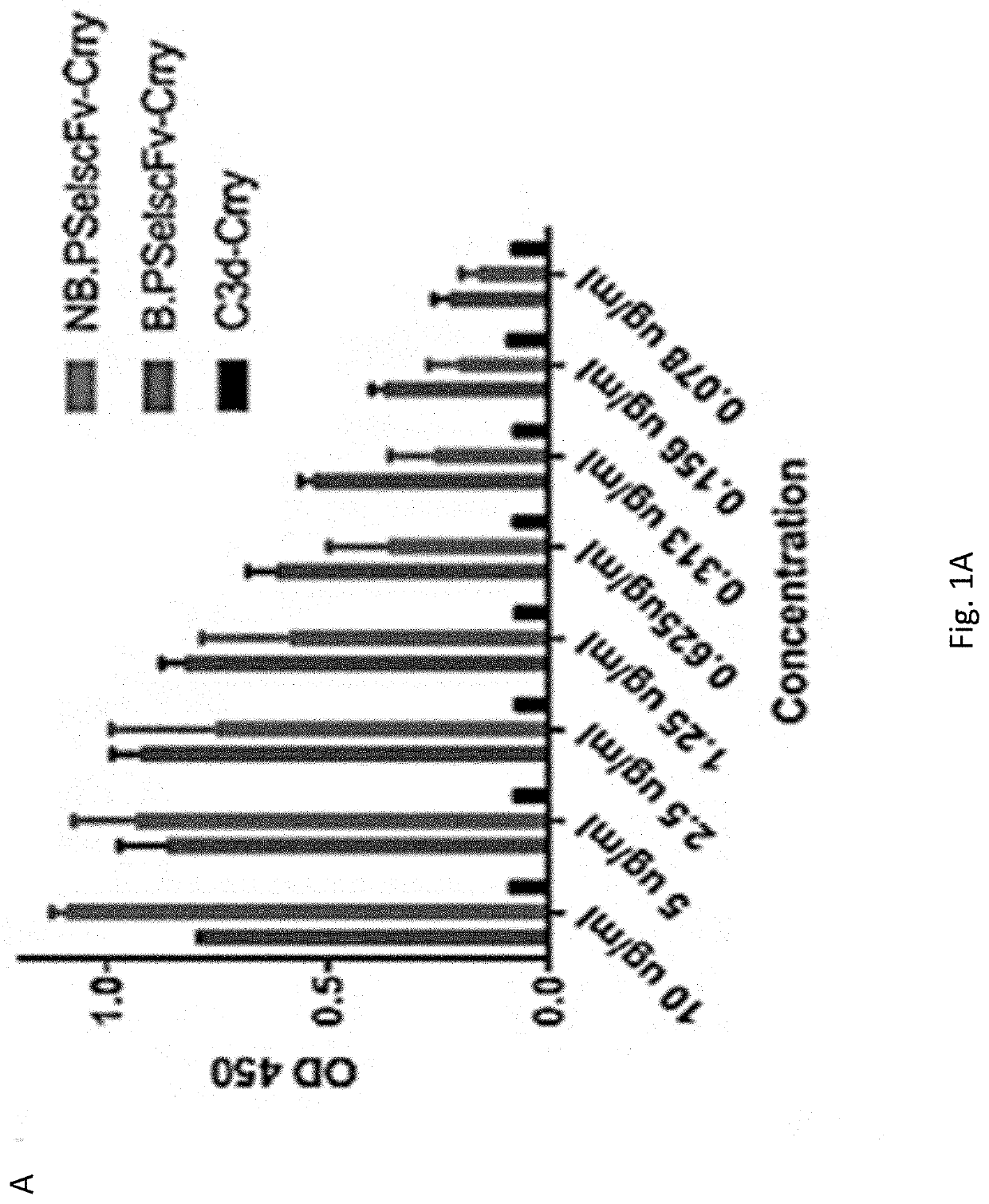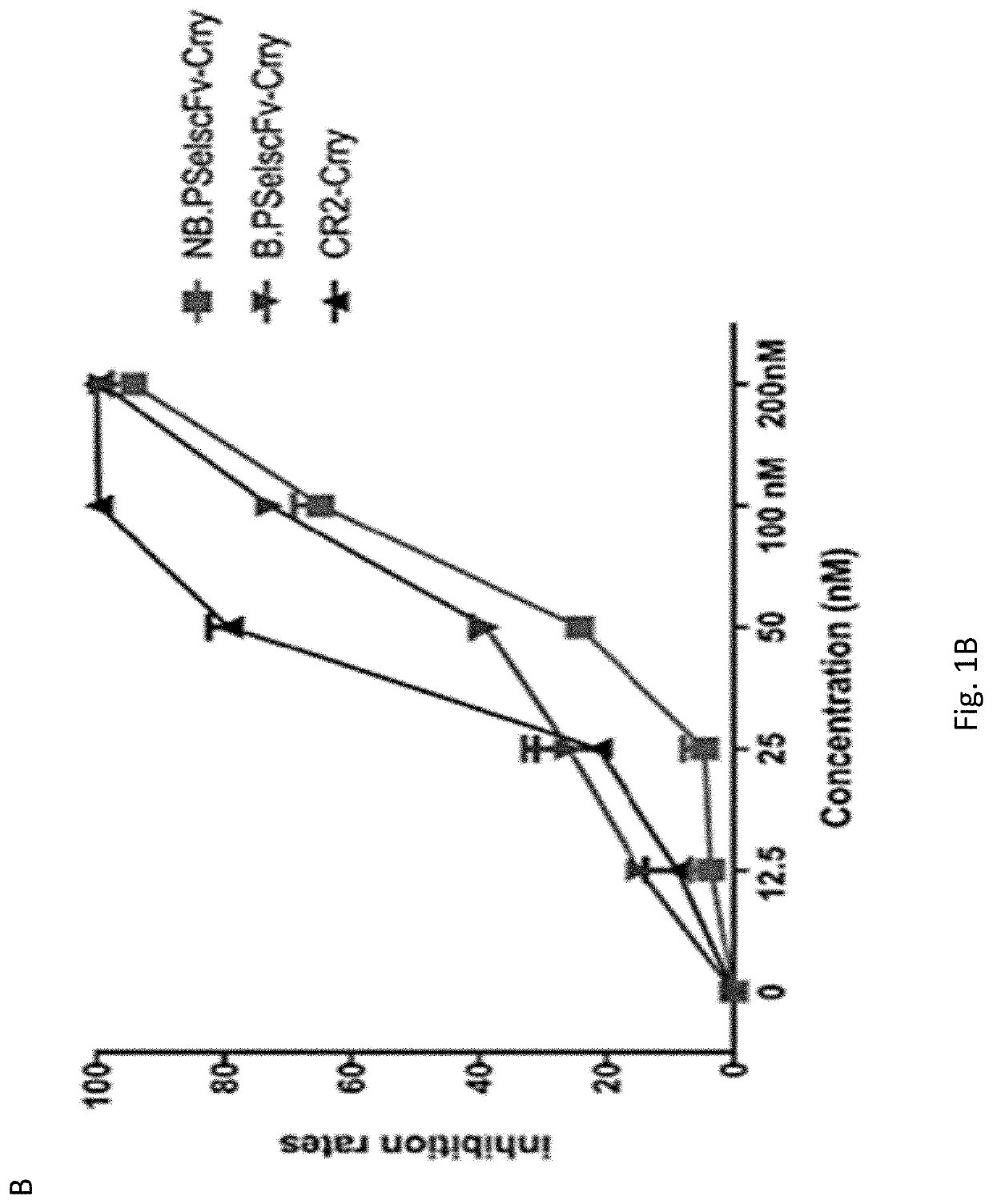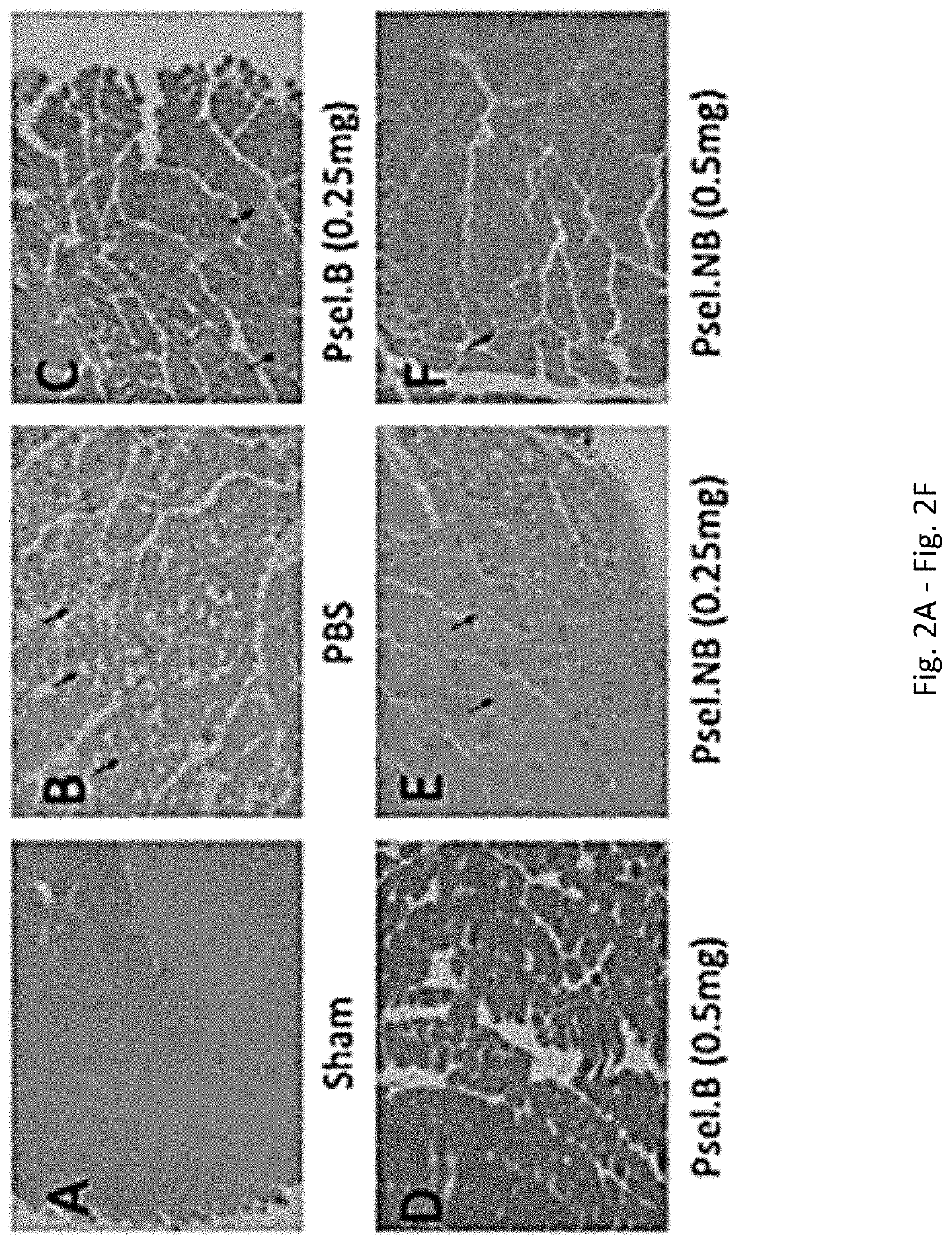Recombinant Fusion Proteins Targeting P-selectin, and Methods of Use Thereof for Treating Diseases and Disorders
a technology of fusion proteins and pselectin, which is applied in the direction of peptides, cardiovascular disorders, drug compositions, etc., can solve the problems of complement-mediated lysis and/or injury of cells and target tissues, limited clinical benefit to patients, and tissue destruction
- Summary
- Abstract
- Description
- Claims
- Application Information
AI Technical Summary
Benefits of technology
Problems solved by technology
Method used
Image
Examples
example 1
electin Targeted Complement Inhibition Reduces Injury Following Hindlimb Ischemia / Reperfusion and Transplantation
[0244]Vascularized Composite Allotransplantation (VCA) has become a clinical reality over the past two decades due to the advent of novel immunosuppressive agents19. Despite these advances the majority of these transplants undergo an episode of acute rejection8. This has lead to the investigation of a variety of immunomodulatory strategies to prevent acute rejection and extend allograft survival. However, few studies have addressed mitigating the effects of ischemia-reperfusion injury (IRI), which initiates a cascade of events that leads to a robust alloimune response.
[0245]Upon harvesting, the donor VC allograft undergoes a period of cold and warm ischemia. VC allografts may be even more susceptible to IRI as compared to other solid organ transplants (SOT) due to their heterogenous nature and multiple tissue types with varying immunogenicity (Caterson et al., 2013, J Cra...
example 2
[0288]The experiments presented herein describe an approach to target complement inhibition to sites of inflammation. More specifically, to target a complement inhibitor sites of P-selectin expression. The targeting moiety consists of anti-P-selectin Ab fragments (for eg. scFv, Fab, whole Ab or other derivatives) linked to a complement inhibitor, although other types of therapeutic could similarly be targeted to sites of P-selectin expression. The targeting vehicles described are scFv's derived from mAbs that recognize both mouse and human P-selectin. The P-selectin Abs or derived scFv's may have blocking or non-blocking P-selectin activity (i.e. inhibit or not P-selectin mediated cell binding). The types of construct described have wide potential application for treating injury in general, ischemia reperfusion injury, inflammation, autoimmunity, alloimmunity, coagulopathies, thrombotic disorders, brain and CNS injuries, neurodegenerative conditions, cancer and any disease / condition...
example 3
n-Crry for Complement Inhibition Following Germinal Matrix Hemorrhage
[0299]Germinal matrix hemorrhage (GMH) is a disease of infancy that affects neonates who are born premature or underweight. It occurs in a region in the brain near the ventricles called the “subventricular zone” that contains fragile vessels. It is also the site of progenitor cell proliferation; cells like neurons and oligodendrocytes that are essential for neurodevelopment.
[0300]Once the germinal matrix hemorrhage occurs, post-hemorrhagic hydrocephalus (PHH) becomes a significant risk. In the acute period, PHH can occur from physical obstruction of the ventricles by blood products. However, after blood products are cleared or broken down, an inflammatory response remains and creates damage to the walls of the ventricles as well as forces increased production of cerebrospinal fluid by the choroid plexus.
[0301]Chronically, there is still evidence of cyclic inflammation that results in scar formation, white matter lo...
PUM
| Property | Measurement | Unit |
|---|---|---|
| concentration | aaaaa | aaaaa |
| ischemia time | aaaaa | aaaaa |
| bleeding time | aaaaa | aaaaa |
Abstract
Description
Claims
Application Information
 Login to View More
Login to View More - R&D
- Intellectual Property
- Life Sciences
- Materials
- Tech Scout
- Unparalleled Data Quality
- Higher Quality Content
- 60% Fewer Hallucinations
Browse by: Latest US Patents, China's latest patents, Technical Efficacy Thesaurus, Application Domain, Technology Topic, Popular Technical Reports.
© 2025 PatSnap. All rights reserved.Legal|Privacy policy|Modern Slavery Act Transparency Statement|Sitemap|About US| Contact US: help@patsnap.com



